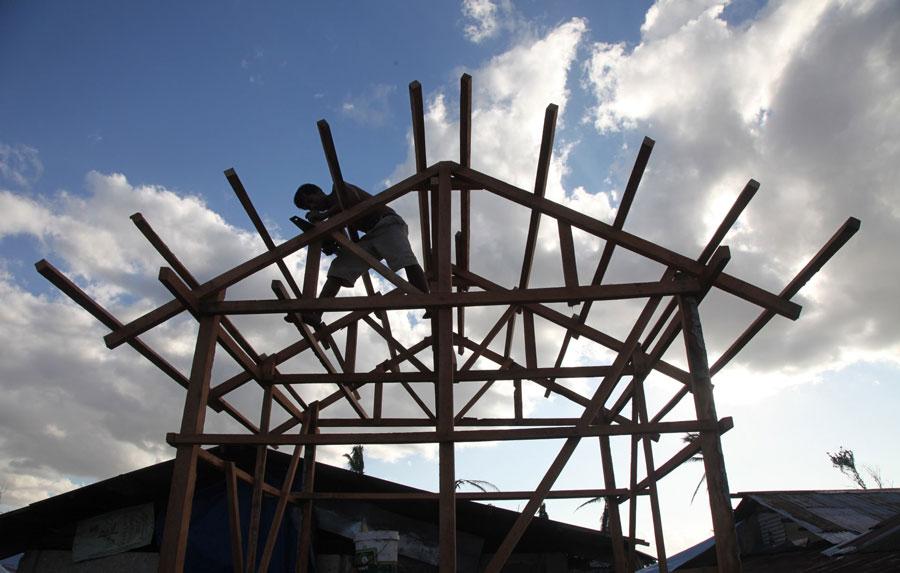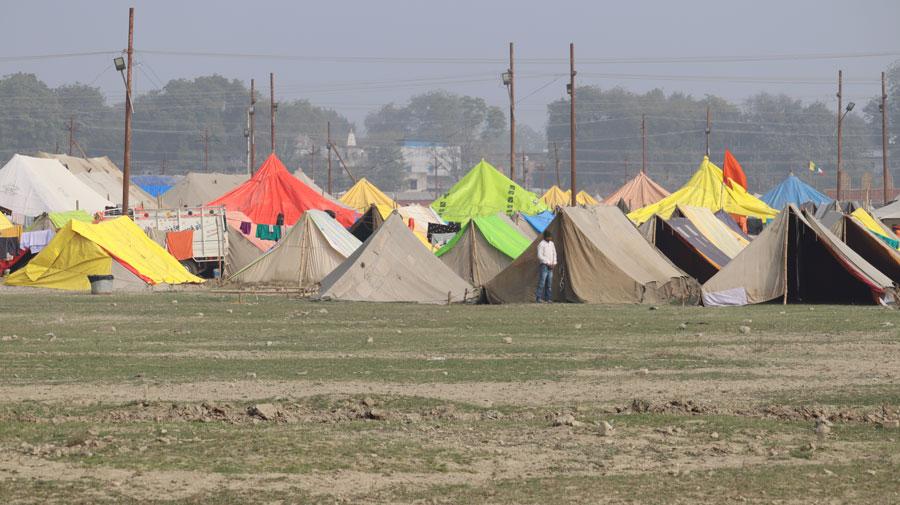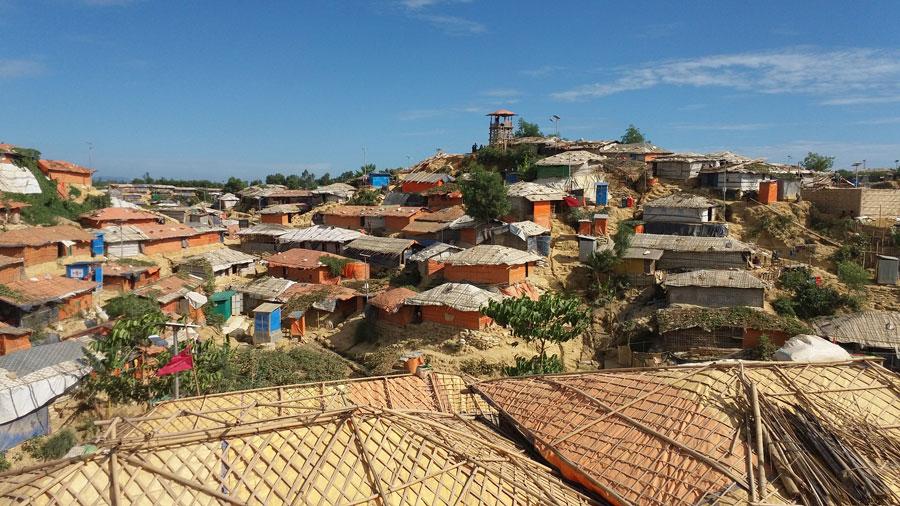Sustainable refuge – lifecycle assessment for humanitarian shelter
Humanitarian and sustainable development George Foden on a scheme to quantify and minimise the environmental impact of shelter solutions in disaster management.

According to the World Green Building Council, buildings and construction account for 36% of global energy use and 39% of energy-related carbon dioxide emissions. The scale associated with modern construction has required built environment actors to consider the lifecycle impact of their activities, from the sourcing of materials, through construction, operation, and on to deconstruction or repurposing. Lifecycle assessment (LCA) approaches allow for the overall impact of a building’s supply chain to be calculated.
In mainstream construction, LCA is a relatively well-established methodology. International standards such as ISO21930/21931 and EN15804/15978 have been specifically developed to support LCA in the built environment, and various wider sustainability standards incorporate LCA into their assessments. In fact, by embedding the principles of LCA into construction and considering environmental impacts throughout the design, construction and operation process, industry leaders have decreased the costs of environmentally beneficial practices while maximising their impact.
LCA, when done right, can help decision-makers reduce the environmental impact of their material choices, construction methods, operational aspects and end-of-life considerations.
However, in less mainstream construction contexts, LCA has received much less attention. In the humanitarian context, construction is often less complex than in developed contexts, however, it still accounts for a large percentage of the overall environmental impact of humanitarian operations. And with conflict and disaster displacement rising year-on-year, the scale of humanitarian construction continues to grow.
Did you know?
In 2020, 15.5mln people were aided by shelter operations globally, and over US$646bln was raised in funding for shelter and settlement operations.
Source: Global Shelter Cluster

Taking shelter
Humanitarian construction is often time- and resource-limited, framed by conflict or disaster, and focused on maximising the number of shelter units available for displaced persons in the shortest time frame. This severely limits the possibilities when it comes to designing sustainable, resilient housing that meets the various needs of affected communities. However, despite these limitations, shelter and settlement actors are focused on providing the best available housing that they can, and increasingly this means providing options that not only meet the needs of affected populations, but also limits their impact on the surrounding environment.
Environmental impact in humanitarian action has a slightly different meaning than in mainstream construction. The primary focus is on the ‘do no harm’ principle, meaning that at the very least, humanitarian response should not damage the local environment, and if possible, should provide opportunities for affected communities to cultivate the land and benefit from local ecosystem services.
In the context of the climate crisis, however, humanitarian organisations have become increasingly aware that ‘do no harm’ does not just mean protecting the local environment when constructing shelters. Flying people and materials around the globe in response to a disaster, or providing hundreds or thousands of units of tarpaulin that cannot be reused at its end-of-life, are contributing to global environmental degradation and greenhouse gas emissions.
If we are not considering the lifecycle environmental impact of shelter materials and methodologies, we are contributing to the causal conditions of further displacement in the future.
In 2018, the Sphere Standards were updated. These are the voluntary minimum standards of humanitarian action and lay out a set of common principles. The 2018 edition focuses more closely on environmental standards than previous versions, for example, in Standard 7 on environmental sustainability, it states that “shelter and settlement assistance minimises any negative programme impact on the natural environment”.
Sphere also lays out various indicators associated with this standard, many of which are covered by existing humanitarian activities, such as environmental impact assessments. There are various existing tools – for example, the Nexus Environmental Assessment Tool (NEAT+), Quantifying Sustainability in the Aftermath of Natural Disasters (QSAND), and the Green Recovery and Reconstruction Toolkit – that allow for an environmental assessment and consideration of issues such as material sourcing, natural environment protection, and operational energy use.
Indicator 3 for Standard 7 is focused on the percentage of low-carbon materials and methods used in shelter construction. As was highlighted in various Shelter Cluster meetings following the release of the Sphere update in 2018, this was an indicator for which the sector had little knowledge of how to address.
The local context
Humanitarian designs and construction methods can vary widely, from very basic designs such as simple tent-like structures that may be seen in refugee camps, all the way up to larger scale reconstruction of permanent buildings.
Usually, cost and availability of materials are guiding factors in decision-making, but practitioners also need to consider the potential impact on the local environment if, for instance, timber materials are to be sourced locally. Local materials and methodologies are preferred as they usually produce more context-appropriate structures, but in a post-disaster scenario it may be that external resources and expertise need to be brought in to meet the needs of displaced populations quickly. Detailed sustainability considerations are laid out in frameworks such as the Quantifying Sustainability in the Aftermath of Natural Disasters sustainability self-assessment tool.
Examples of the different designs and methodologies used for shelter can be seen in the case studies published by the Global Shelter Cluster at bit.ly/3gW002o.
Weighing up options
The UK's Building Research Establishment (BRE) Trust charity began discussions with the Global Shelter Cluster (GSC)’s Environment Community of Practice (ECOP) to see how it could support the community to meet environmental standards in late 2018. The focus was around how to measure the CO2e emissions of any given shelter options, and how to use this figure in decision-making.
One of the key reasons why CO2e impact is not something that is routinely measured in humanitarian action is that it is necessarily a secondary priority when weighed up against the lifesaving activity. Even in terms of sustainability considerations, preservation of local ecological resources and protection of the surrounding environment are also often a higher priority than wider greenhouse gas emissions.
To make LCA a useful tool for humanitarian actors, it needs to be adapted to the very different needs of this sector. As such, BRE Trust wanted to get a clearer understanding of the needs and priorities of shelter response through a survey of GSC members. Over 30 professionals, mostly with an architecture or engineering background, were surveyed on the relative importance of various environmental considerations in shelter response. The focus was on understanding both individual and institutional priorities. The lifecycle impact of shelters was identified as something that should be better understood by practitioners, but it was acknowledged that this was not a priority. Various reasons were given for this, including the necessary prioritisation of other environmental factors such as human toxicity, potential damage to the local environment, material durability and the potential for reuse, and time and resource limitations.
The tension between best practice outcomes from a performance perspective, donor priorities and changing operational contexts means that there is often little capacity to access necessary information to conduct LCA.
However, with updated voluntary Sphere Standards and increasing focus on global environmental impact of shelter operations, there remains a need to find ways to better quantify the lifecycle impact that shelter typologies are having. In the first instance, having a comparative metric to inform decision-making in terms of shelter materials and methodologies was highlighted by survey participants as a useful tool for action.
Carbon equivalent impact can be used as a proxy for wider environmental impact, and is useful for generating quick data points that can be compared and help to start the conversation around environmental considerations in shelter action. It is not intended as an accurate overall representation of the environmental performance of a given shelter typology, but one metric among many that can be used to inform decision-making and give quick quantitative data for use in reporting to donors, and for project monitoring and evaluation.

Ease of access
BRE Trust, ECOP and the World Wildlife Fund have developed a simple Shelter Methodology for the Assessment of Carbon (SMAC) tool to quantify KGCO2e impact for the full lifecycle of a shelter typology and allow comparison across designs. It is a simplified LCA methodology, taking data from component materials, packaging, transport and end-of-life considerations. The SMAC tool can provide a KGCO2e output for up to four different shelter typologies, allowing for comparison across options.
The idea behind this was to provide a useful proxy metric during shelter procurement. As was acknowledged by the participants in the survey, the successful adoption of any LCA methodologies depends on the ease with which this could be achieved. While those involved in shelter procurement at office level would likely have access to the relevant information to review carbon impact, in field situations, some of that might be lacking. Due to the resource constraints of post-disaster response, even when that information is available, it may not be the best use of time and effort to focus on conducting complex LCAs.
The tool is available for use by shelter and settlement practitioners, with the intention being that, as it gains further use, new materials can be added to improve its efficacy.
The outputs are presented as KGCO2e, which can inform the decisions made in shelter design, procurement and construction. This is the start of a process currently under review by the shelter sector, in which environmental impact is prioritised as a focal point for improving humanitarian action. The outputs from BRE Trust’s survey have helped to inform a roadmap for further research and there is an appetite for continued sharing of information and adaptation of existing construction methodologies to the humanitarian context.
Quantifying the environmental impact of shelter and settlement action is a growing priority. Adapting existing methodologies for LCA, learning from the complex contexts of humanitarian action, and developing tools and metrics for use in field action are all key to further improving the impact that humanitarian action can have.







